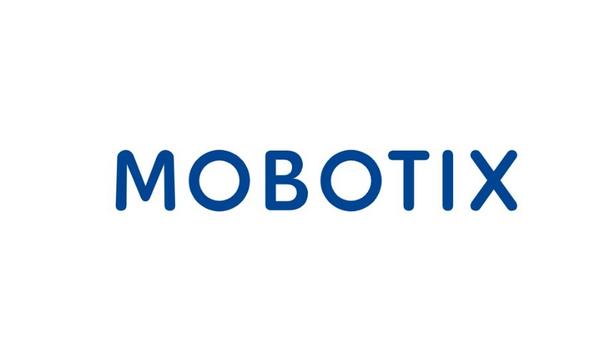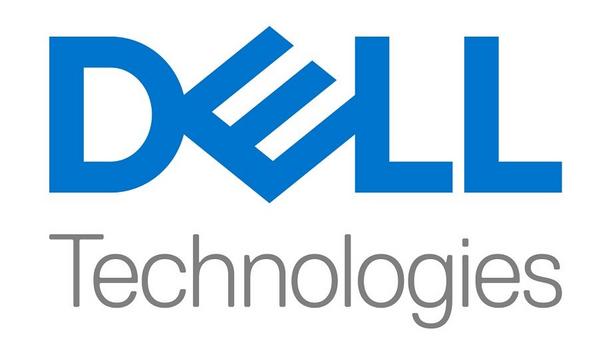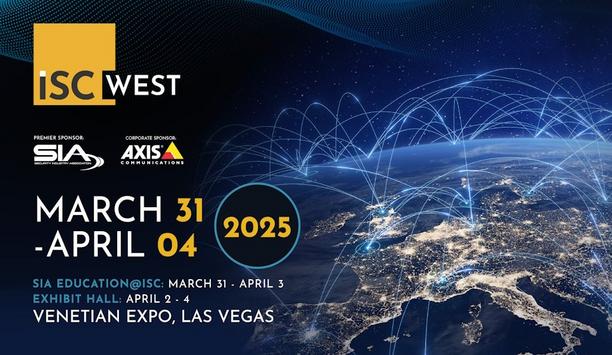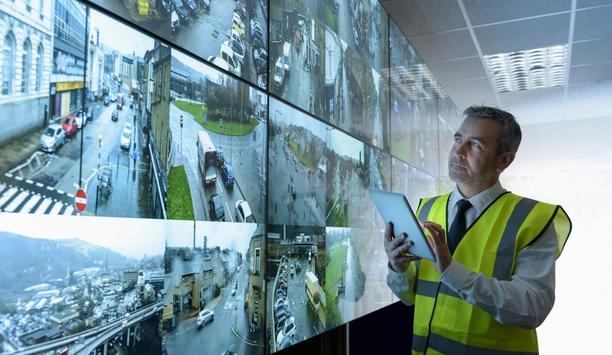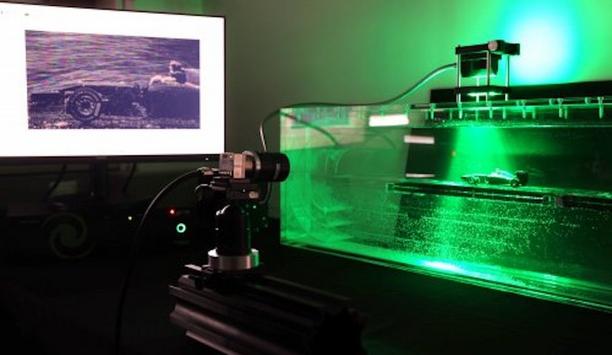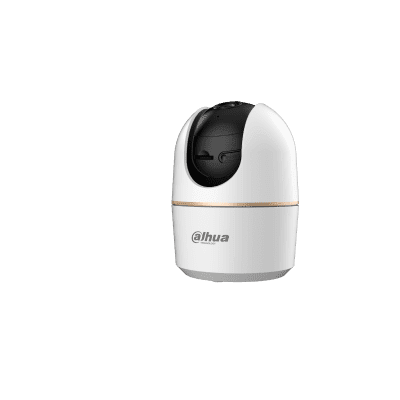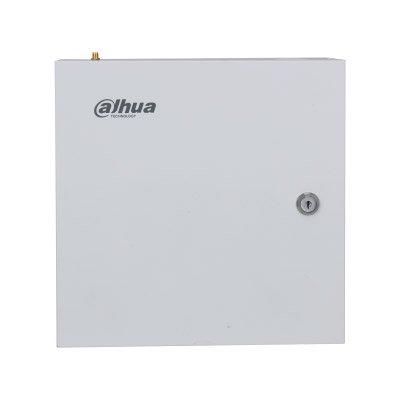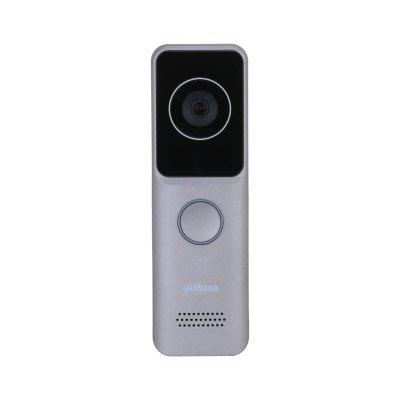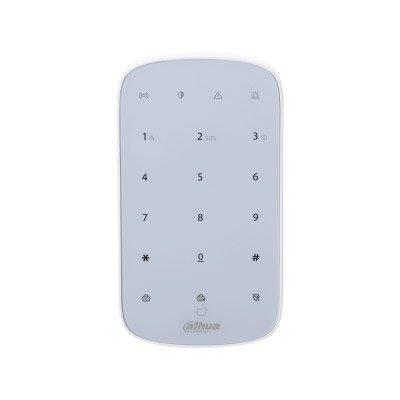Wireless security
Elite Interactive Solutions, a remote video guarding pioneer using patented intelligence and integration to achieve proven crime prevention, recently gathered law enforcement officials to its headquarters for a special invitational lunch-and-learn event. The function exemplifies Elite’s multifaceted mission to strengthen private-public partnerships by educating officers on how remote guarding directly prevents crime and protects properties in real-time, eliminates false alarms, boosts law...
His Majesty’s Revenue and Customs (HMRC) has blocked over 100 million malicious emails in the past three years, as cyber threats against UK government services continue to escalate. The data was obtained through a Freedom of Information (FOI) request, where HMRC disclosed detailed figures on the volume of malicious emails blocked from November 2021 to September 2024. Data rise in cyberattacks The data shows a sharp rise in cyberattacks, highlighting the growing threat to the UK govt fav...
MOBOTIX consolidates its position as a pioneering provider of innovative fire protection technologies: MOBOTIX thermographic cameras have again received the “Technical Evaluation of Suitability” (Evaluación Técnica de Idoneidad). The certification according to the strict requirements of the Spanish Fire Protection Systems Regulation (Reglamento de Instalaciones de Protección Contra Incendios/RIPCI) was issued by Applus, a certification body recognised by the Sp...
Radiant Security launches the industry’s first Adaptive AI Security Operations Centre (SOC) platform. The announcement marks a major step for cybersecurity automation in a landscape flooded with alert fatigue, static playbooks, and analyst burnout. Now, security analyst teams can instantly and transparently triage, investigate, and remediate 100% of alerts from any source, at machine speed. Proactive defence strategies Radiant eliminates false-positive noise, escalating only suspi...
AITX’s Robotic Assistance Devices (RAD) has deployed its ROAMEO Gen 4 mobile security robot to the Downtown St. Louis Community Improvement District (CID) in anticipation of the NCAA Men’s Frozen Four Championship, taking place April 10 and 12. ROAMEO’s presence will enhance safety and engagement throughout the heart of the city during this nationally spotlighted event, offering an innovative layer of real-time situational awareness and autonomous patrol. RAD’s interact...
ISC West 2025, organised by RX and in collaboration with the Security Industry Association, concluded at the Venetian Expo in Las Vegas last week. The nation’s pioneering comprehensive and converged security event attracted nearly 29,000 industry professionals and left a lasting impression on the global security community. Over five action-packed days, ISC West welcomed more than 19,000 attendees and featured 750 exhibiting brands. ISC West innovations and ideas “ISC Wes...
News
The 8th edition of Inter Airport Southeast Asia (IASEA) was held in Singapore from 25-27 March 2025. Spanning across 6,259 sqm of exhibition space, the airport exhibition and conference brought together 3,621 industry trade professionals from 53 countries and regions, and featured 134 exhibiting companies, including pavilions representing Germany, Italy, Japan, and Singapore. The event saw a 43% increase in exhibitor size and a 15.6% rise in attendee numbers, underscoring the rising significance of IASEA as a platform for productive discussions. The event's achievement is also attributed to the increasing demands of operators and the rapid development and expansion of airports in Asia. Latest innovations and solutions for airports IASEA serves as the dedicated event for airports, airlines, aviation authorities, ground handlers IASEA serves as the dedicated event for airports, airlines, aviation authorities, ground handlers and related business executives in Asia to learn about and experience the latest products, services and technologies, for the future development of Asia’s airports. One of the highlights of this year’s edition was the presence of a delegation of pioneers from major international airports in Vietnam, including Long Thanh International Airport—one of the world's most expensive greenfield airport projects—Noi Bai Airport, Danang Airport, Cat Bi Airport, Phu Quoc Airport, and Cam Ranh International Terminal. Latest advancements in aviation technology One of Airports Corporation of Vietnam’s (ACV) primary objectives in the coming years is the successful completion and operation of Long Thanh International Airport. Under the direction of the Prime Minister of Vietnam, the presence of ACV’s delegation at IASEA 2025 was to seek high-quality solutions and potential partners for this airport. Mr. Nguyen Cao Cuong, Deputy General Director, Airports Corporation of Vietnam (ACV), shared during his opening remarks, “Vietnam, as one of the fastest-growing aviation markets in the world, is actively developing key airport infrastructure projects to meet the increasing demand for air transport. This event is not only an opportunity to explore the latest advancements in aviation technology but also serves as a platform for collaboration and exchange, fostering stronger partnerships to enhance airport infrastructure across Southeast Asia." Thales’ expertise in airport operations and security Thales participated to expand business chances with regional aviation players and introduce keys First-time exhibitor Thales participated to expand business opportunities with regional aviation players and introduce solutions such as its latest Fly-to-Gate biometrics solution that enables a touchless, fast, and easy passenger journey from check-in to boarding. Thales commented, “Air traffic has fully recovered since the pandemic years. The increase of major projects and the prioritisation of data (data management, data sharing, data security) from airport decision-makers have grown vastly within the industry. At Thales, we recognise that data will improve efficiency in airport operations – namely terminal operations, aircraft turnaround, passenger flow – beyond what hardware can achieve." "However, these advancements also come with challenges, including cybersecurity and leveraging data while keeping airport operations human-centric. Our participation at the conference and exhibition of IASEA 2025 allowed us to connect and engage in discussions with several airport and aviation representatives. We were also able to share Thales’ expertise in airport operations and security, cybersecurity resilience, and biometric solutions, all for a seamless passenger experience.” Integration of AI and security systems in the aviation industry Smiths Detection, a pioneer in threat detection and security screening technologies, introduced the SDX 10060 XDi to the Asia market – a pioneering-edge X-ray scanner that offers highly accurate material discrimination and substance identification based on an object’s molecular structure. “We are glad to be back at IASEA, a key platform for us to showcase our latest solutions and connect with both customers and prospects because the show attracts aviation pioneers from across the region,” said Desmond Lian, Senior Solutions Consultant, Smiths Detection (Asia Pacific) Pte. Ltd. “It was especially meaningful to reconnect with major airports such as Narita International Airport Corporation, as we discuss each other’s long-term plans and areas of collaboration. Such conversations make me hopeful for stronger integration of AI and security systems across the air and land side of the aviation industry. I hope to see the development of an architecture platform where different industry players can share and communicate data, and tackle cybersecurity issues as an ecosystem.” Mallaghan's sustainability goals Mallaghan, one of the fastest-growing airport GSE manufacturers, returned to IASEA 2025 Additionally, Mallaghan, one of the fastest-growing airport Ground Support Equipment (GSE) manufacturers (headquartered in Ireland and with a worldwide presence), returned to the 8th edition of IASEA 2025. Niall Mallaghan, Director at Mallaghan, shared, “IASEA has always been one of our go-to exhibitions for the Asia Pacific region because of the opportunities to meet pioneering suppliers and our customers such as dnata and SATS. While the industry traditionally relied on diesel-powered GSE, Mallaghan, together other industry pioneers, have recognised the impact of electrifying ground handling equipment as an effective route towards greener aviation. At Mallaghan, we strive to enable airports to reach their sustainability goals by working closely with the ground handlers.” Conversations that focused on resilient, data-driven airports In line with this year’s theme, “Airport Operations for Tomorrow”, the conference and exhibition floor saw timely conversations on the use of technology – more specifically, data and Artificial Intelligence (AI) – to drive resilient airports of tomorrow. “With the ever-increasing complexities of running an airport, the chances of something going awry also rise significantly. Thus, keeping airport operations resilient is paramount,” said David Jea, GM, Safety, Security & Business Continuity, Airport Authority Hong Kong. “As a conference speaker of this year’s IASEA, I’m thankful for the opportunity to engage with peers on aviation security, and the exposure to the full range of innovations for airport operations, with my greatest harvest being the appreciation of technology for optimised operations. The airports of tomorrow necessitate industry players to use AI and other technologies effectively, ensuring the solutions adopted are advanced and secure, workers are trained with more proficient skill sets, and the industry continues to attract professionals.” Data analytics in airport operations Asia Pacific holds over 40% of the global aircraft orders, signifying a strong focus on fleet investment As of 2024, Asia Pacific holds over 40% of the global aircraft orders, signifying a strong focus on fleet investment and renewal for the region. Ensuring airports keep up with this projected regional growth, the panel titled ‘Using Data Analytics to Optimise Airport Operations’ dived into the challenges and opportunities of harnessing data analytics to drive innovation and ensure sustainable growth in airport operations. Industry pioneers acknowledged that airports typically generate a wealth of live data that can help to enhance the passenger experience. However, a core challenge is in utilising this data – the industry is looking to integrate all data on a single system for real-time processing, while ensuring security measures are in place in the face of cyber threats. How ground handling teams can build robust operations Separately, on the ground handling side, the conference panel ‘Boosting Operational Resilience: Preparing for the Unexpected’ gave a comprehensive overview of how ground handling teams can build robust operations that withstand unforeseen challenges of equipment failures, staffing shortages, and extreme weather. Panellists emphasised the role of ground handlers in adapting to unique equipment and processes deployed across individual airports. Disruptions can come in many forms. Hence, it is imperative for the ground handlers to work closely with the airports (with diverse teams across different airports) to analyse big data, address the disruption, and re-instil confidence in passengers.
Colorado’s SB25-143 is now headed to Gov. Jared Polis after clearing the Colorado General Assembly on April 4, 2025. The measure lifts an existing moratorium on new use of facial recognition technology – for certain applications – by Colorado public schools that has been in place since 2022, while extending the prohibition applicable to all other uses past July 1, when it is currently set to expire. Use of the technology in schools Colorado school districts have successfully used facial recognition technology for years As originally drafted, the measure would have imposed a complete prohibition on the use of the technology in K-12 schools – drawing immediate opposition from the Colorado school community, which pressed for changes throughout the legislative process. Colorado school districts have successfully used facial recognition technology for years as an added line of defense and an enhanced tool for student safety. Importance of the technology in key limited applications Throughout 2023 and 2024, school district representatives had provided extensive information to the Colorado General Assembly’s Task Force for the Consideration of Facial Recognition Services regarding the importance of the technology in key limited applications. Evidence of facial recognition’s effectiveness were provided during testimony on the bill in the House and Senate education committees. For example, one technology expert from one Colorado district relayed a scenario in which the technology was used in response to previous incidents to help ensure school personnel knew if a specific special needs child tried to abruptly exit and wander away the building – in time to intervene and prevent endangerment from a nearby busy highway. School safety and security purposes Authorises school districts to use facial recognition technology for academic purposes authorised by local boards As a result of these efforts, SB25-143, as passed by the legislature, authorises school districts to use facial recognition technology for educational purposes approved by local school boards, as well as for narrowly defined school safety and security purposes. Those purposes include 1) alerting staff to the presence of individuals who have made threats of violence against a school, 2) helping to immediately locate missing children on school grounds or help determine their whereabouts and 3) providing alerts to staff in common situations where specific individuals are prohibited from entering school grounds under a court order or district determination. Importance of advanced technologies “We commend the bill sponsors for recognising the importance of advanced technologies that are increasingly critical to greater school safety and security,” said Jake Parker, senior director of government relations with the Security Industry Association (SIA). “It is essential that we ensure our school security professionals can responsibly leverage such technologies to best protect students, teachers and staff using proven best practices.” Use of facial recognition technology by schools With the enactment of the measure, Colorado would remain the only U.S. state with statutory restrictions specific to the use of facial recognition technology by schools. “Additionally, we are pleased that SIA was included to participate in Colorado’s Facial Recognition Task Force as it considered these issues and will continue to provide subject matter expertise from the security industry on this important technology,” said Parker.
Dell Technologies introduces advancements across its industry-pioneering server, storage and data protection portfolios designed to help organisations achieve data centre modernisation. Why it matters Organisations are rethinking their IT strategies to respond to the rise of AI, the need to support both traditional and modern workloads and increased cyber threats. IT teams are moving toward disaggregated infrastructure that abstracts compute, storage and networking into shared resource pools to deliver improved scalability, efficiency and adaptability. Dell Technologies server, storage and data protection innovations are designed to help customers rethink their IT infrastructure approach to better meet the needs of traditional and modern workloads. Dell PowerEdge: performance, energy efficiency and scalability Dell PowerEdge R470, R570, R670 and R770 servers with Intel Xeon 6 Processors with P-cores are single and double-socket servers in 1U and 2U form factors that easily handle demanding traditional and emerging workloads like HPC, virtualisation, analytics and AI inferencing: Improves Workload Consolidation: Consolidate legacy platforms, freeing up power and up to 80% of space per 42U rack with the Dell PowerEdge R770. These systems save up to half of the energy costs and greenhouse gas emissions, and support up to 50% more cores per processors and 67% increased performance. This reduces data centre footprints to help achieve sustainability goals and lower overall total cost of ownership without sacrificing performance. Delivers Extreme Power with Efficiency: The powerful and efficient Dell PowerEdge R570 achieves record-breaking Intel performance per watt, helping enterprises save on energy costs while maintaining high performance workloads. Future-Ready Designs: Simplify and future-proof operations with the Data Centre – Modular Hardware System (DC-MHS) architecture, as part of the Open Compute Project (OCP). DC-MHS standardises server design, supporting easier integration into existing infrastructure, improving customer choice. Streamlined management: PowerEdge servers deliver streamlined management and robust protection through Dell OpenManage enhancements and Integrated Dell Remote Access Controller (IDRAC 10) updates, including real-time monitoring. When paired with PERC13 PCIe Gen 5 HW Raid controller, customers can see up to a 33X reduction in write latency. Dell PowerStore boosts security: data management Dell PowerStore’s intelligent software design delivers an automated, highly programmable platform with advanced data reduction and independently scalable storage services suited to the needs of modern disaggregated architectures. PowerStore’s latest software release delivers: AI-Powered Analytics: Reduce cost and eliminate manual effort with Smart Support alerts and remediation, performance headroom analytics and carbon footprint forecasting using Dell AIOps (formerly CloudIQ) software. Enhanced Zero-Trust Security: Control access and boost availability with DoD smart card authentication support, automated certificate renewal and enhanced Storage Direct Protection integrations that deliver up to 4X faster backup restores plus support for the latest Dell PowerProtect systems. Advanced File System Support: Enhance system performance with advanced file management capabilities, robust data protection with secure file snapshots, capacity insights for smarter storage planning and streamlined migration from Dell Unity systems. Next generation of Dell ObjectScale Dell introduces the next generation of Dell ObjectScale, the industry’s highest-performing object platform. Dell ObjectScale delivers massive scalability, performance and efficiency for AI workloads. Dell is modernising the enterprise-grade architecture of ObjectScale and introducing new all-flash and HDD appliance options to provide: Fast Object for AI: Innovate faster with the industry-pioneering AI workload performance of ObjectScale XF960, delivering up to 2X greater throughput per node than the closest competitor and up to 8X greater density than previous-generation all-flash systems. Accelerate Modern Workloads: HDD-based Dell ObjectScale X560 accelerates key workloads like media ingest, backups and AI model training with read 83% faster throughput. Extreme Efficiency and Resiliency: Easily operate and secure AI data lakes with multi-site federation, copy-to-cloud, geo-replication, global namespace and data governance capabilities, backed by a new hybrid cloud solution powered by ObjectScale, developed in collaboration with Wasabi. Dell PowerScale innovations unlock the power of AI data Dell PowerScale’s scale-out architecture makes it ideal to use as the backbone for modern AI-driven operations. Advancements improve performance-per-terabyte, enhance data centre floorspace utilisation and balance affordability with performance to optimise TCO. High Density All-Flash Storage: 122TB SSDs maximise GPU utilisation with up to 6 PBs of high-speed data access in a single 2U node configuration and deliver pioneering performance density to meet massive AI throughput requirements. Hybrid and Archive Nodes: PowerScale A & H series nodes (H710, H7100, A310, A3100) deliver reduced latency and improved performance with a refreshed compute module for HDD-based platforms. Customers can future proof their data centres and retain AI training data longer with a flexible, TCO-optimised portfolio mix to improve accuracy and efficiency. Dell PowerProtect: performance and efficiency Dell, the industry pioneer in purpose-built backup appliances, introduces data protection updates designed to help customers strengthen their cyber resilience while controlling costs with enhanced performance, security and efficiency: Scalable and Efficient Data Protection for All: Dell PowerProtect DD6410, with a capacity of 12 TB to 256 TB, is ideal for commercial, small business and remote site environments. It delivers up to 91% faster restores and scalability for traditional and modern workloads plus efficient operations with industry-pioneering up to 65X deduplication. All-Flash Performance and Efficiency: Dell PowerProtect All-Flash Ready Node, the first step in Dell’s all-flash data protection journey, delivers more secure and efficient data protection with a 220 TB capacity system that offers over 61% faster restore speeds, uses up to 36% less power, and features a 5X smaller footprint. Strengthened Enterprise Resiliency: PowerProtect Data Manager updates help customers quickly identify security risks with Anomaly Detection, manage Microsoft Hyper-V and Red Hat OpenShift Virtualisation virtual machine backups and easily archive data to Dell ObjectScale for long-term retention. IT agility and data centre modernisation “Modern applications require a new breed of infrastructure that will help customers keep pace with everchanging data centre demands,” said Arthur Lewis, president, Infrastructure Solutions Group, Dell Technologies. “From storage to servers to networking to data protection, only Dell Technologies provides an end-to-end disaggregated infrastructure portfolio that helps customers reduce complexity, increase IT agility and accelerate data centre modernisation.” IT strategies and resource management “Organisations are refocusing their IT strategies to take a disaggregated approach to infrastructure that improves resource management and simplifies management complexity,” said Simon Robinson, principal analyst, Enterprise Strategy Group, now part of Omdia. “Dell Technologies is delivering updates across its infrastructure portfolio designed to help customers easily overcome these challenges so that they’re ready to manage any workload.” Availability Dell PowerEdge R470, R570, R670 and R770 servers featuring Intel Xeon 6 Processors with P-cores and E-cores are available now. Dell PowerStore software updates are available now. Dell ObjectScale is available now as a software update for current Dell ECS environments. HDD-based ObjectScale X560 will be available in April 2025. All-Flash ObjectScale appliances will be available beginning in Q3 CY2025. Dell PowerScale HDD-based nodes will be available in June 2025. Dell PowerScale with 122TB drives will be available in May 2025. Dell PowerProtect DD6410 and All-Flash Ready Node will be available in April 2025. Dell PowerProtect Data Manager updates are available now.
Trusted Connectivity Alliance (TCA) has released Version 3.4 of its eUICC Profile Package: Interoperable Format Technical Specification (Interoperable Profile Package Specification). The latest version includes major updates to support full alignment with 3GPP Release 18 to enable advanced 5G functionality and secure authentication in 5G network slicing, as well as enabling the remote management of eSIM profiles on low-power and network-constrained devices. Interoperable connectivity profiles Mobile operators to load interoperable connectivity profiles in an eSIM Additional updates and clarifications to promote security and interoperability have also been made. TCA’s Interoperable Profile Package Specification – which is used in every eSIM deployed in the field – standardises the format used for the remote loading of subscriptions onto eSIMs across deployed devices. This enables mobile operators to load interoperable connectivity profiles in an eSIM, regardless of the SIM vendor. Key updates in Version 3.4 Full alignment with 3GPP Release 18 – this includes support of Slice SIM (SSIM), allowing operators to utilise the proven security capabilities of eUICC / eSIM to authenticate subscribers and enable secure access to 5G network slices. This will help to enhance the security of 5G networks and protect subscriber privacy. Support for GlobalPlatform’s standardised Secure Channel Protocol Amendment M– which enables remote application and file management on constrained IoT devices that could not previously be updated or patched due to the absence of SMS support. This addresses an immediate interoperability challenge by making it easier to remotely provision and manage eSIM profiles on constrained NarrowBand IoT (NB-IoT) devices. Benefits of eSIM technology TCA also estimates that the total available market for eSIM was 514 million units Denis Praca, Chair of the TCA eUICC Working Group, comments: “Since it was first published 10 years ago, TCA’s Interoperable Profile Package Specification has played a foundational role in promoting trust, consistency and reliability across the eSIM ecosystem." "These latest enhancements stand to further extend the capabilities and benefits of eSIM technology, bringing seamless connectivity and advanced security to new and established use-cases.” Latest TCA eSIM market data The publication of the new specification follows the release of the latest TCA eSIM market data, which revealed that 2024 was a landmark year of growth across the eSIM ecosystem. eSIM shipment volumes collectively reported by TCA members in 2024 surpassed half a billion units, increasing 35% year-on-year to reach 503 million. TCA also estimates that the total available market for eSIM was 514 million units. The growing availability of eSIM-enabled devices was matched by increasing consumer adoption, with consumer eSIM profile downloads rising by 56%. Enhancement of eSIM technology TCA published Version 3.3.1.2 of eUICC Profile Package: Interoperable Format Test Specification Bertrand Moussel, Chair of the TCA Board, adds: “As the eSIM ecosystem continues to expand, TCA is committed to shaping the continued standardisation and enhancement of eSIM technology in close collaboration with pioneering industry stakeholders.” TCA has also published Version 3.3.1.2 of eUICC Profile Package: Interoperable Format Test Specification, which provides a globally standardised means of testing products to ensure the eSIM profile is correctly loaded. GSMA’s eSIM Test Specifications Version 3.3.1.2 is a GlobalPlatform-approved test suite, which is part of the GSMA Consumer and IoT eSIM compliance programmes and referenced in GSMA’s eSIM Test Specifications (SGP.23 and SGP.33) – the dedicated, globally-backed remote SIM test specifications for Consumer and IoT. Work is currently ongoing in TCA to develop the test specification for Interoperable Profile Package Technical Specification v3.4.
As the world emerges from the pandemic's shadow five years after it spread globally, everything seems to be back on track. Air travel volumes have matched and even surpassed the pre-COVID level. But are they truly “back”? The pandemic did more than just bring masks and border closures. It fundamentally reshaped the world, accelerating digitalisation beyond recognition and irrevocably redefining security paradigms and human behaviour. Heightened security concerns Standard solutions are no longer enough to meet the evolving needs of operators and passengers alike As passenger volumes surge across the Asia-Pacific (APAC) region, airports and airlines are facing an inevitable reality: progress breeds complexity. Rising demand for air travel has skyrocketed, exacerbating existing challenges, from heightened security concerns to longer wait times. In this environment, standard solutions are no longer enough to meet the evolving needs of operators and passengers alike. The need for faster, safer, and more seamless travel experiences requires a more sophisticated approach. Biometrics, with its ability to streamline processes while enhancing security, is the key to unlocking the full potential of the airport industry in APAC. The challenges of scaling The aviation industry in the APAC region is experiencing unprecedented growth. In January 2025, APAC carriers accounted for over half (56.6%) of the total increase in global passenger traffic — an even higher share than before. While this rapid expansion presents significant opportunities, it also introduces new challenges in passenger processing, security, and operational efficiency. Security concerns Cybersecurity challenges have emerged against the backdrop of rapid digitalisation of society Airports must ensure stringent security measures while managing an increasing passenger volume. Traditional identity verification methods rely on manual checks, which are prone to human error and inefficiency. Security threats, including unauthorised access and identity fraud, further complicate the situation, necessitating a more advanced approach. Additionally, cybersecurity challenges have emerged against the backdrop of rapid digitalisation of society. As airports adopt digital identity solutions, they become prime targets for cyberattacks. Thus, airports are to invest in robust cybersecurity measures, including encryption, multi-factor authentication, and real-time monitoring, to safeguard passenger data. Passenger flow management: The bottleneck challenge Managing smooth passenger movement within an airport is a significant challenge, yet many APAC airports struggle with processing surging passenger volumes. The busiest hubs, such as Hong Kong International, Changi, and Sydney Airport, are operating at or near capacity, increasing the risk of flight delays, missed connections, and overcrowding in terminals. Key factors affecting passenger flow management include: Customs and immigration long wait times: Ho Chi Minh City's Tan Son Nhat Airport experienced a surge in tourism, with nearly nine million visitors in the first five months of 2024. This influx resulted in customs and immigration wait times extending up to 120 minutes during peak periods. Capacity constraints: Many APAC airports, particularly Bangkok’s Suvarnabhumi and Manila’s Ninoy Aquino, were designed for lower passenger capacities than they now handle. With terminal expansion projects often taking 5–10 years to complete, smart automation offers a more immediate solution to optimise throughput. Staff shortages: Lack of personnel in APAC airports slow down passenger processing, affecting security checks, baggage handling, and customer service. ACI Europe reports that rising traffic and workforce shortages are creating major bottlenecks, requiring smart solutions. Degraded passenger experience: A threat to loyalty The overall airport experience is a critical factor influencing traveller loyalty. Passengers expect smooth and hassle-free processing, yet inefficiencies in baggage handling, long security queues, and outdated infrastructure contribute to a frustrating experience. Airports that fail to address these issues risk losing passenger trust and airline partnerships. Implementing self-service kiosks, biometric-based boarding, and digital check-ins can significantly enhance the passenger experience, including attracting Gen-Z travellers. Rising operational costs: A post-pandemic reality Implementation of automatic identity proof systems can help optimise workforce allocation The pandemic has impacted not only public health but also the global economy, triggering a worldwide recession. Airports must balance operational efficiency with cost control. Staffing large-scale security and immigration checkpoints requires substantial resources, making manual processes increasingly unsustainable in the long run. The implementation of automated identity verification systems can help optimise workforce allocation, reduce operational costs, and contribute to organic growth. Human error: A persistent weak spot Traditional identity verification methods are vulnerable to human factors. Manual errors in ticketing, immigration control, and security checks can lead to security breaches, misidentification of passengers, and misplaced baggage. Facial biometrics, in turn, mitigates these risks, while ensuring accurate and consistent identity verification at every touchpoint. Bottlenecks in tourist attractions Efficient and modern airport skills attract visitors and contribute to a country’s economic growth Airports play a crucial role in a country’s tourism industry. Efficient and modern airport facilities attract international travellers and contribute to a country’s economic growth as every flight creates more jobs and trade. A seamless airport experience enabled by biometric solutions enhances a country's appeal as a travel destination. Sustainability and the Net Zero challenge Sustainability is a growing priority for the aviation sector. Airports are investing in green initiatives to minimise their carbon footprint in alignment with Net Zero 2050 commitment. However, traditional airport processes, including paper-based check-ins and excessive energy consumption, conflict with sustainability goals. By integrating biometric solutions, airports can transition toward paperless travel, reducing waste and promoting eco-friendly operations. Additionally, efficient passenger processing leads to reduced energy usage in terminals, contributing to overall sustainability objectives. Why facial biometrics? Automated biometric boarding can cut processing times by up to 50%, leading to a smoother Facial biometric technology is revolutionising airport operations by offering a secure, fast, and contactless method of identity verification. APAC is pioneering this transformation, with numerous airports integrating biometric solutions to streamline passenger processing. For example, 28 major Indian airports, including Bengaluru, Varanasi, Delhi, and Mumbai, have adopted facial recognition systems. Now facial recognition covers nearly 90% of the country’s domestic air travel. Automated biometric boarding can cut processing times by up to 50%, leading to a smoother, more efficient travel experience. Additionally, Singapore’s Changi Airport has integrated biometric technology to streamline its immigration process, allowing passengers to clear immigration in as little as 10 seconds. Facial recognition technology Facial biometrics is not just about speed and convenience. It also plays a crucial role in enhancing airport security. The technology eliminates risks associated with identity fraud, and unauthorised access. Traditional passport and boarding pass verification can be forged or misplaced, whereas biometric identification offers a tamper-proof alternative, ensuring that passengers are accurately identified at every checkpoint. Moreover, facial recognition technology significantly reduces reliance on manual processes. Automated verification streamlines passenger movement, freeing up airport staff to focus on more critical tasks, such as security monitoring and customer assistance. This efficiency translates into reduced operational costs and better resource allocation, allowing airports to operate more smoothly. APAC airports are leveraging facial biometrics to: Reduce security checkpoint wait times Enhance border control efficiency Minimise human error in identity verification Improve passenger experience with seamless, contactless processing Enable self-service options for check-in and baggage drop-off Optimise workforce deployment by reducing reliance on manual verification Strengthen security by mitigating risks associated with fraudulent identification Support sustainability efforts by reducing paper waste, energy consumption, and overall resource usage Biometric technology Airports in the APAC region remain at the forefront of its implementation As biometric technology continues to evolve, airports in the APAC region remain at the forefront of its implementation. According to recent data from SITA, 70% of global airlines are expected to adopt biometric identification by 2026, with an increasing number of airports integrating these solutions into their operational frameworks. This proactive adoption underscores APAC’s commitment to innovation, security, and passenger-centric airport experiences. Balancing privacy and security Despite its benefits, facial biometrics raises concerns about data privacy and security. Passengers are increasingly aware of how their personal data is collected, stored, and used. The potential risks of data breaches and misuse require airports and governing bodies to establish stringent data protection measures and clear communication strategies. To address these concerns, airports and regulatory bodies must ensure: Compliance with global and regional data protection regulations, such as GDPR, India’s Digital Personal Data Protection Act, etc. Secure encryption of biometric data to prevent breaches and unauthorised access Transparent communication about data collection, storage, and retention policies Implementation of consent-based biometric enrolment, allowing passengers to opt in or out of facial recognition programs Several airports in APAC have successfully implemented privacy-by-design principles, ensuring that biometric data is stored temporarily and automatically deleted post-use. These measures help reinforce passenger trust and compliance with data protection laws. To sum up: The time to invest in biometrics is now As the APAC aviation industry continues its rapid expansion, airports are to adopt innovative solutions to manage increased passenger volumes efficiently and stay ahead. Facial biometrics is not just a technology — it’s a strategic enabler of security, passenger experience, and overall operational efficiency. While privacy concerns must be responsibly addressed, the advantages of biometric-enabled travel far outweigh the risks. The future of air travel in APAC will be defined by digital transformation, where facial recognition, AI-driven security, and automation play a pivotal role in creating safe, efficient, and passenger-friendly airport experiences. For industry pioneers responsible for overseeing airport operations, ensuring aviation security, and integrating digital solutions, the message is clear: the time to invest in biometric technology is now. The APAC region is setting a global benchmark for the future of seamless, technology-driven air travel — airports that act now will emerge as industry pioneers.
UK Connect, a pioneering connectivity and communications solutions provider, has announced a strategic partnership with BlueFort, the UK's premier independent Security Solutions Partner, to significantly enhance cybersecurity protection for construction industry clients. The new partnership will see UK Connect and BlueFort work together to provide cybersecurity solutions to some of the UK’s biggest construction companies. UK Connect's innovative solutions The groundbreaking partnership brings together UK Connect's innovative connectivity solutions and BlueFort's cutting-edge cybersecurity expertise, creating a comprehensive digital security framework for construction companies navigating an increasingly complex technological landscape. UK Connect: Connectivity cornerstone UK Connect is the pioneering connectivity and communications solutions provider for top-tier brands like Crest Nicholson, Taylor Wimpey, CALA Homes, and Kier Group, offering wireless connectivity, Internet of Things (IoT), and professional services as solutions. UK Connect’s solutions are designed to enhance communication, collaboration, and productivity, ensuring seamless connectivity from day one. No matter where connectivity is needed—from remote locations to dense urban areas—UK Connect’s dedicated team of experts is committed to delivering tailored solutions that meet the unique demands of each project. Whether it's rapid deployment of temporary broadband or long-term connectivity solutions, UK Connect ensures clients’ projects stay connected with optimal performance. BlueFort: Securing millions of users BlueFort is the UK’s only Full-Service Security Integrator, specialising in identity and cloud security BlueFort is the UK’s only Full-Service Security Integrator, specialising in identity and cloud security. As the security team for security teams, they combine expert knowledge with cutting-edge technology to help organisations secure their digital identities and cloud environments while navigating the complexities of compliance and regulatory requirements (NCSC CAF, NIS2, ISO 27001, and GDPR to name a few). With a curated suite of tools, products, and skills, BlueFort partners with CISOs and Security Operations teams to consolidate, optimise, and transform their security landscape—ensuring seamless protection against evolving threats in an increasingly cloud-driven world. Enhanced security offering By integrating BlueFort's advanced cybersecurity capabilities, this partnership makes available: Comprehensive threat mitigation strategies developed by industry-pioneering security experts Proactive protection against emerging digital risks specific to the construction sector Simplified and consolidated security environments that optimise operational efficiency Compliance with rigorous industry standards, including NIST, ISO 27001, and CyberEssentials Collaboration with BlueFort Joe Budnar-Hunt, Chief Technology Officer of UK Connect, emphasised the partnership's strategic importance: "In today's digital era, robust cybersecurity is not just a technical requirement—it's a critical business enabler. Our collaboration with BlueFort transforms how construction companies approach digital security, providing them with peace of mind and advanced protection." "As a customer of BlueFort, UK Connect has experienced first-hand how they can expertly simplify cybersecurity, enhancing an organisation’s security posture through an array of solutions." Partnership with UK Connect Josh Neame, Chief Technology Officer of BlueFort, said: “Construction companies provide a vital role in developing Britain’s housing stock and infrastructure. And so, preventing security breaches is of critical importance." “With experience in delivering cybersecurity solutions to some of the largest UK housebuilders, BlueFort, in partnership with UK Connect, are well equipped to understand the common challenges facing construction businesses and how to address their cybersecurity concerns.”


Expert commentary
March is Women in Security Month, a time dedicated to celebrating and promoting the contributions of women in the security field—particularly in cybersecurity. This observance aligns with Women’s History Month, providing an opportunity to reflect on the progress made and the work still needed to advance gender equity in security. Evolving role of women in security The security industry has witnessed a steady increase in women's participation. According to ISC2 Research in its “Women’s Role in Filling the Workforce Gap” report, women make up an estimated 20 to 25 percent of the security industry. Promisingly, younger generations are entering the profession at higher rates, with 26 percent of working professionals under 30 identifying as women. The security industry has witnessed a steady increase in women's participation The research tells us that women are thriving in a variety of roles, from engineering and system administration to sales, marketing, and project leadership. Key factors driving this transformation include mentorship programs, male allies advocating for gender equality, and cultural shifts recognising the unique perspectives and strengths women bring to security challenges. These efforts are fostering more inclusive environments and ultimately strengthening the industry. The value of diverse perspectives in security Security is not a one-size-fits-all industry—each organisation and facility has unique needs that require varied perspectives. Greater representation of women has introduced fresh approaches to problem-solving, fostering collaboration and driving innovation. By integrating diverse viewpoints, security professionals can create more effective solutions that better address end-user needs. Industry support for women’s professional growth SIA's WISF offers subcommittees such as NavigateHER, SupportHER, and UpLiftHER Organisations like the Security Industry Association (SIA) and ASIS International have established networking platforms and initiatives to support women in security. Events such as the Security LeadHER Conference provide valuable professional development and networking opportunities. Companies are also investing in science, technology, engineering, and mathematics (STEM) initiatives, hands-on training, and recruitment programs to attract more women into the field. Additionally, SIA's Women in Security Forum (WISF) offers subcommittees such as NavigateHER, SupportHER, and UpLiftHER, which provide pathways for engagement and growth. Challenges women in security face Despite progress, challenges remain. Many women still feel it necessary to repeatedly prove their expertise, take on additional informal responsibilities, or carefully navigate workplace dynamics. Imposter syndrome can be another hurdle, even for accomplished professionals. However, women in security are addressing these challenges by setting boundaries, advocating for themselves, and supporting one another through mentorship. By excelling in leadership and technical roles, women are reshaping outdated perceptions and advocating for more inclusive workplace policies. Steps industry pioneers can take To further support women in security, industry pioneers could: Provide targeted professional development and career advancement opportunities. Foster strong, supportive communities that recognise and mentor women. Implement structured mentorship programs that connect experienced professionals with newcomers. Promote workplace flexibility to help employees balance personal and career commitments. Actively challenge biases and advocate for meaningful change within organisations. Advice for women entering the security field Here are key pieces of advice for women considering a career in security: Own Your Expertise – Have confidence in your knowledge and skills. Seek Out Mentors & Allies – Connect with supportive professionals who can guide your career. Build a Strong Network – Join organisations like ASIS Women in Security, SIA Women in Security Forum, or Women in CyberSecurity (WiCyS), and attend industry events to expand your connections. Speak Up & Take Space – Confidently share your ideas and challenge outdated norms. Develop Resilience & Advocate for Yourself – Push past biases, demand the respect you deserve, and negotiate for fair salaries and promotions. Keep Learning & Stay Ahead – Continually build your expertise to stay competitive in the evolving security industry. The future of women in security As the security industry evolves with technological advancements and global changes, opportunities for women will continue to expand. Women are not just participating in the industry’s growth—they are shaping its future. With growing mentorship programs, male allies advocating for gender equality, and ongoing cultural shifts, the focus is no longer just on breaking barriers but on building bridges to new opportunities.
Technology advances in the security industry are transforming the way modern systems are designed and installed. Customers today are looking for greater scalability and flexibility, lower up-front costs, and operational efficiency. Cloud-based software as a service (SaaS) solutions, AI-enhanced tools, and IoT-enabled sensors and devices are increasingly in demand. The traditional role of the systems integrator is evolving as a result. While security integrators have always worked closely with end users, today’s pioneers go beyond installation and maintenance. They align security strategies with evolving business needs, integrating IT, cybersecurity, and data-driven insights into their offerings. A look at the past and present Integrators are often asked to help tailor solutions and provide expertise in IT and cybersecurity Traditionally, systems integrators specialised in installing and maintaining wired physical security systems like CCTV, access control, and alarms. The service model was built around large, up-front investments and project-based installations. However, today customers are seeking comprehensive solutions. They’re looking to wirelessly integrate security infrastructure with cloud-based SaaS systems and IoT devices. While modern systems are often faster to deploy, they’re most effective when supported by ongoing consulting and strategic planning. Integrators are often asked to help tailor solutions and provide expertise in IT and cybersecurity. Data requirements and modern systems Data requirements have also changed. Modern systems collect vast amounts of data. Advanced analytics, machine learning, and automation are now must-have tools for actionable insights. Security integrators can help end users set up custom dashboards, automations, and continuous system optimisation. Let’s look at some of the specific ways the role of systems integrators is evolving and how to adapt and succeed. Strengthen your IT expertise Integrators with IT expertise can ensure that hardware is optimised and maintained for peak performance The competitive landscape today includes not just security specialists but also IT-focused integrators and SaaS providers. Systems integrators with expertise in traditional physical security solutions plus IT experience offer unique value. They understand the real-world security challenges and opportunities, along with cybersecurity and network best practices. Integrators with IT expertise can also ensure that hardware is optimised and maintained for peak performance. Their experience with legacy systems allows them to offer practical recommendations on cost-effective approaches, such as upgrading or integrating older hardware with new digital solutions. Consider who’s making the purchase decisions Traditionally, security integrators primarily sold to security directors, facility managers, and operations teams. Now, multiple stakeholders may be involved in decision-making. IT teams, CIOs, and CTOs often weigh in on purchase decisions when cloud-based security and SaaS solutions are under consideration. Customers today aren’t just shopping for cameras, access control panels, alarms, and other hardware components. They’re looking for security ecosystems that can integrate with enterprise-wide IT infrastructure and business applications. When working with these different teams, consider outlining the system's return on investment (ROI). How can the solution reduce risk for various departments? Can it help improve operational efficiency or reduce the time required to onboard and train staff? Will it make regulatory compliance easier to manage? Focus on the long-term value for the entire organisation. Take a consultative approach Another way systems integrators are adding value is by offering vertical specialisation Installation fees remain important for many integrators, but there may be additional consultative opportunities to build long-term relationships with customers. Offer services such as roadmap planning, hardware and integration maintenance, training to certify end users on the manufacturer’s product, and cybersecurity services. While cloud-based solutions reduce on-premises maintenance, they don’t eliminate the need for ongoing support and training. Consider offering training opportunities. These can lead to other benefits as well. Better-educated and technically proficient customers are usually more willing to adopt new technologies. They understand the value of these investments and have more confidence that they’ll see results. Another way systems integrators are adding value is by offering vertical specialisation. Healthcare, sports venues, critical infrastructure, education, retail - each specialty has its own set of challenges, partner networks, regulatory restrictions, training needs, and business requirements. Integrators who specialise are uniquely positioned to offer key sector-specific insights that are invaluable to their clients. Embrace the cloud A key growth area for integrators is supporting customers in their shift to cloud deployments. Cloud solutions aren’t a one-size-fits-all solution. Each organisation is evaluating options and deciding whether cloud, hybrid, or fully on-prem solutions are the right fit for its unique needs. A key growth area for integrators is helping clients in their shift to cloud deployments Helping customers navigate and adopt cloud or hybrid solutions opens new opportunities to expand your business and deepen your relationship with your customers. Systems integrators who sell cloud solutions have the opportunity to add new layers to services for more value for customers. With a cloud solution that's easy and fast to deploy and managed and maintained by the provider, you can reduce overhead costs, staff training, and truck rolls via remote customer support. These benefits also allow you to spend time developing greater expertise in your customers’ processes. Using this knowledge, you can tailor your services towards potential productivity gains for your customers and turn them into additional sales. You ensure that your customers get the most out of the technology that’s available and that they have already purchased. Highlight your focus on cybersecurity Cybersecurity is no longer solely an IT department's responsibility. While dedicated IT security teams may still handle broader network defense, integrators play a crucial role in securing access control, surveillance, and IoT devices within a security framework. If unsecured, these devices can provide an entry point for cyber criminals to gain access to an organisation’s network. Cybersecurity is no longer solely an IT department's responsibility To best protect end users from cyberattacks, choose physical security systems with built-in security and privacy-by-design features. Help customers implement best practices to ensure their entire ecosystem is designed, built, and managed with end-to-end security in mind. Once implemented, work with your manufacturers, consultants, and end users to ensure that vulnerabilities are identified and mitigated. Every person on the network plays a role in keeping cyber threats at bay. Lean into the power of partnerships In today’s complex and dynamic security landscape, choosing the right technology partners is crucial. Ask potential partners to share their technology roadmap, and how you can offer feedback or participate in discussions about industry trends. Ideally, your partners will have a program in place to get input from integrators and end users, so they can develop products that are designed to address their most pressing issues and concerns. Your manufacturer partners should be working to help identify the evolving needs of customers and communicate these insights to systems integrators. Seek partners who actively support integrators to understand how security is evolving In addition to a good experience for the end user, strong manufacturer partners also offer solutions to streamline and automate workflows for integrators. It should be easy to order and check your shipping statuses online, for example. These are simple things that save you time and demonstrate your partner’s care for your business. Seek partners who actively support integrators to understand how security is evolving. While training is often offered on-site, some companies are now also offering blended learning models so integrators and their technicians can reduce classroom time and stay out in the field. Evolution is an opportunity Security integrators with traditional physical security expertise remain indispensable because they understand real-world risks and regulatory requirements. They can provide hands-on system deployment and optimisation. Now, there are new opportunities to build long term customer relationships. As the physical security industry undergoes this profound shift, adaptation is key. By embracing cloud and hybrid solutions, integrators can unlock new revenue streams, enhance customer relationships, and stay ahead of technological advancements. With the right partnerships and a forward-thinking mindset, systems integrators can navigate this transformation and take advantage of new opportunities being presented by evolving technology. Leverage your deep industry experience while upskilling in cloud, cybersecurity, and IT. The strongest approach is for end users, systems integrators, IT specialists, and manufacturers to work together to navigate industry changes.
From where I sit in talking to security pioneers every day, the traditional Global Security Operations Centre (GSOC) stands at a critical inflection point. Security teams are up against challenges in staffing, operational efficiency, and more threat complexity, which means “thinking outside the box” is becoming critical. The use of artificial intelligence (AI) is emerging as more than a buzzword in these situations; it’s becoming a game-changing force multiplier in security operations. Reaching a breaking point Today's GSOCs face a perfect storm of operational challenges. Security operators, typically earning between $20-40 per hour, require extensive training periods lasting weeks or months as a result of the numerous applications they’re tasked with using. Yet the industry grapples with insane turnover rates of 100-% to 300% annually, creating a costly cycle of continuous recruitment and training. Meanwhile, operators are drowning in video feeds and alarms, leading to fatigue, missed incidents, and delayed response times. Practical applications for AI The reality of many GSOCs, however, is a disjointed mess of multiple applications The GSOC is the centre of an organization’s security and in a perfect world, all of the data related to safety across multiple facilities flows through there, giving operators a clear picture of what’s going on at any given time. The reality of many GSOCs, however, is a disjointed mess of multiple applications. Think about all the platforms needed to respond to a single incident – access control alarm, video to verify, standard operating procedures (SOPs) stored on a shared drive, radios to get a hold of a guard to dispatch, finding a list of emergency numbers and corresponding it to where the incident is happening, and manually logging the results. Steps into a single platform Not only is there a case for unifying all of these steps into a single platform that pulls in data from various sources, but layering response with AI-enabled technology to achieve the following: Real-time video analysis and threat detection. AI-enabled systems are revolutionising surveillance operations by simultaneously monitoring multiple video feeds, detecting and classifying objects, people, and behaviours in real-time. The technology excels at identifying suspicious activities such as loitering, abandoned objects, or unauthorised access attempts, automatically alerting operators to potential threats – or even identifying false alarms that can take human operators away from the work they’re doing – all while maintaining vigilance across numerous camera feeds. Intelligent alarm management. One of AI's most immediate impacts is in addressing the chronic problem of false alarms. By analysing multiple data points simultaneously, AI technology can intelligently filter and verify alerts, dramatically reducing false positives that traditionally consume valuable operator time. An AI GSOC operator, for example, can assess an incoming alarm and either identify it as a real threat (then escalate to its human supervisors) or use SOPs to determine that the alarm is false, providing feedback and reasoning that’s collected and assessed. This intelligent triage ensures security teams focus on genuine threats rather than chasing false alarms, significantly improving response efficiency. Automated incident response. When security incidents occur, AI systems can instantly gather relevant data from multiple sources – including video feeds, access control logs, and sensor data – to generate preliminary incident reports and initiate appropriate response protocols. This automation ensures consistent application of security procedures while maintaining detailed documentation for compliance and analysis purposes. Predictive analytics and pattern recognition. By analysing historical data, AI systems can identify patterns that might indicate emerging security risks before they materialise. This includes detecting unusual access patterns, anomalies in foot traffic, or behavioural patterns that suggest potential future security threats, enabling proactive rather than reactive security measures. The benefits to the business While AI can be used in so many ways to reduce false alarms, create more efficiencies, and help GSOC operators elevate their roles to be more strategic, there is still a stigma associated with its use. However, a lot of the conversations around this kind of investment can be elevated to reflect positively on the business, which can help achieve more buy-in from leadership. Here are some of the ways: Operational improvements: Dramatic reduction in false alarm rates through intelligent verification systems that analyse multiple data points simultaneously Response times cut significantly through automated triage and threat assessment protocols Standardised and consistent application of security protocols across all shifts and incidents More efficient resource allocation through AI-driven staffing recommendations based on historical patterns Expanded security coverage without proportional staffing increases, enabling monitoring of multiple locations simultaneously Enhanced incident documentation through automated report generation and data collection Improved situational awareness through real-time correlation of multiple data sources Reduced training time for new operators through AI-assisted guidance systems Better compliance management through automated protocol enforcement and documentation Business impact: Significant cost savings through reduced false alarm response and more efficient staffing Decreased liability exposure through comprehensive incident documentation and consistent protocol application Enhanced regulatory compliance through automated record-keeping and standardised procedures Improved risk management through predictive analytics and early warning capabilities Better return on investment for security technology through integrated AI-driven optimization Increased scalability of security operations without proportional cost increases More robust business continuity through improved threat detection and response Enhanced protection of critical assets through constant AI monitoring Personnel impact: Reduced operator burnout through automation of routine and repetitive tasks Enhanced job satisfaction as operators focus on strategic decision-making rather than routine monitoring Improved work-life balance through more efficient resource allocation New career development opportunities in AI-enabled security operations Better retention rates through reduced stress and increased job engagement Enhanced skill development as operators learn to work with advanced technology Improved team collaboration through AI-assisted information sharing More effective decision-making support through AI-driven insights Greater operator confidence through AI-backed verification of security events AI and the road ahead Integration of AI into the GSOC is about more than simply technological advancement While security historically hasn’t changed as quickly as its cyber counterparts, its evolution is imminent. Integration of AI into the GSOC is about more than simply technological advancement; it’s a seismic shift in how organisations approach security operations. The future of this is in the partnership between human expertise and AI capabilities, where technology handles routine monitoring and initial threat assessment, allowing security personnel to focus on complex decision-making and strategic security initiatives. Transformation of security operations For security pioneers looking to implement AI in their GSOCs, success lies in thoughtful integration that considers both technical requirements and human factors. By carefully balancing automation with human oversight, organisations can create more effective, efficient, and responsive security operations that deliver tangible value to the enterprise. The transformation of security operations through AI isn't just about doing more with less – it's about doing better with what we have. As threats become more sophisticated and security demands continue to grow, AI-enabled GSOCs will be better positioned to meet these challenges while delivering enhanced protection for people, assets, and operations.
Security beat
AI has the potential to enhance the usability of traditionally complex access control and physical security systems. The application of AI (artificial intelligence) within access control is still relatively new, but rapid advancements in generative AI are already transforming how security systems operate. acre security is driving the deployment of generative AI in access control through its acquisition of REKS earlier this year. REKS is a purpose-built generative AI solution designed specifically for acre’s access control platform. Unlike generic AI tools, REKS understands both system and security-specific terminology, allowing users to ask natural-language questions like, “Show me all access denied events at a specific location,” and receive instant results. AI workflows and AI agents “We're starting to see how AI workflows and AI agents, that leverage language models, can potentially be used in conjunction with access control to create new, automated processes around false alarm reduction, system configuration, report generation, data analysis, threat detection, and in-system customer support,” says Adam Groom, Director of Business Development, AI Development Team, acre security. “We expect AI-driven capabilities to evolve rapidly, but the full range of benefits will depend on continued development and real-world application,” he adds. Integrate AI-driven capabilities acre’s ability to integrate AI-driven capabilities across the company’s product portfolio positions The best way to think of REKS is as an acre access control expert you can talk to, says Groom. “As AI adoption grows in security, REKS will expand its capabilities, making access control more usable and more efficient.” Groom says acre’s ability to integrate AI-driven capabilities across the company’s product portfolio positions the company as a pioneer in next-generation physical security. “These features will add long-term value by enhancing usability and operational insights across various segments,” says Groom. “Work is already under way to incorporate REKS into acre access control, and we’ll evaluate other integration opportunities in the future.” REKS' AI capabilities According to acre, REKS simplifies daily operations, automating routine tasks, and delivering real-time, actionable intelligence. With REKS' AI capabilities, users can interact with the system to retrieve more detailed insights and actionable information from their acre access control system. “This eliminates the need for complex reports, navigating drop-down menus, or manually reviewing logs,” says Groom. “It significantly enhances efficiency and usability for security professionals.” Enhancing productivity and customer satisfaction Key concern is ensuring that system configuration, enactment, and servicing remain within their scope For integrators, the key concern is ensuring that system configuration, implementation, and servicing remain within their scope of expertise. With REKS, that doesn’t change — but the process becomes significantly faster and more efficient. Instead of manually configuring every panel, input, and output — a traditionally time-consuming task — REKS enables integrators to use natural language commands to streamline setup and adjustments, says Groom. This eliminates tedious steps and dramatically improves operational efficiency, allowing integrators to deploy and fine-tune systems with greater speed and accuracy, ultimately enhancing both productivity and customer satisfaction, he adds. Cloud-enabled ecosystems “We are committed to helping organisations modernise their security infrastructure by transitioning from legacy systems to cloud-enabled ecosystems at their own pace — ensuring minimal disruption while maximising value,” says Groom. “By integrating AI-driven capabilities, we enhance usability and deliver deeper operational insights across all segments.” “Security’s future isn’t about forcing change — it’s about empowering choice,” adds Groom. “Whether staying on-prem, migrating to the cloud, or adopting a hybrid model, we plan to provide a seamless, zero-disruption transition, prioritising interoperability, automation, and security at every stage.” Generic AI tools AI must be purpose-built for security applications because security demands precision, reliability, and context-aware decision-making, which only focused AI offerings like REKS bring to the table, says Groom. In contrast, generic AI tools, like ChatGPT, are designed to perform a wide variety of tasks, like how humans can learn and do many different things. Instead, purpose-built AI is built to do just one specific function. “REKS adds specially designed artificial intelligence to our access control solutions to enhance both intelligence gathering and the user experience,” says Groom. New applications in access control The integration of generative AI into acre's access control platforms and their broader portfolio A new AI development team will lead AI initiatives at acre, driving the integration of generative AI into acre's access control platforms and their broader portfolio. This team will seek to push boundaries in applying AI to new applications in access control, intrusion detection, and beyond, empowering security professionals to interact with their systems in a smarter, more intuitive way. But don’t worry, AI will not take the human element out of security entirely. AI human capabilities “The reality is that AI will improve upon human capabilities because it is a versatile tool that supports and strengthens security operations, not a replacement for human decision-making,” comments Groom. “It helps operators process large amounts of data quickly and detect patterns that might be missed otherwise.” Rather than removing the human element, AI allows security teams to work more efficiently by automating repetitive tasks and providing actionable data, enabling professionals to focus on critical responsibilities. {##Poll1743085396 - What is the biggest challenge you face with your current access control system?##}
The practice of executive protection changed forever on Dec. 4, 2024, when UnitedHealthcare CEO Brian Thompson was shot outside a Manhattan, New York, hotel. The shocking event raised awareness in board rooms around the world about the need for, and challenges of, executive protection. Questions followed immediately, including why was the high-level executive not protected? Combination of risk and reward UnitedHealthcare’s stock price has gone down more than 20% since the shooting The event also highlighted what is at stake for companies, extending beyond the safety of executives and impacting many factors, even including a company’s stock price. UnitedHealthcare’s stock price has gone down more than 20% since the shooting, equating to tens of billions of dollars. “Companies are considering the combination of risk and reward like never before when it comes to executive protection,” says Glen Kucera, President of Allied Universal Enhanced Protection Services. “What are the chances this could happen? Before Dec. 4 many thought it was zero. And what are the financial implications for a company if it happens? Executive protection is a small investment to protect against a worst-case scenario.” Evaluation of an executive protection Before the UnitedHealthcare shooting raised awareness, fewer than 50% of executives had protection. But concerns that previously fell on deaf ears now have the full attention of companies, says Kucera. “Boards of directors are having to figure this out,” he adds. “They may not have executive protection, but now they have to do it.” A threat assessment, conducted by a company such as Allied Universal, provides an independent evaluation of a company’s executive protection needs. The assessment evaluates factors such as an executive’s travel habits, the safety of their home, etc. Does the executive need protection 24/7, or just when they travel into more dangerous areas? Risks increase related to corporate earnings Sometimes, cases increase the need for executive protection, such as an internal threat In assessing threats, security professionals also look beyond the individual to consider the safety of a corporate facility, for example. “Is there a visual deterrent, controlling who comes and goes?” asks Kucera. “If there is good security, it all ties together. We do home assessment, facility assessment, route assessment, and travel assessment as needed.” Sometimes, circumstances increase the need for executive protection, such as an internal threat. Timing is a factor, and risks increase related to corporate earnings releases, new product announcements, and corporate layoffs or consolidation. Monitoring social media tracks shifting threats that impact the need for executive protection. UnitedHealthcare shooting “He didn’t have it and probably didn’t think he needed it,” comments Kucera about the UnitedHealthcare executive who was gunned down in the streets of New York City. “He was staying at the hotel across the street and was used to walking down the street every day.” “Sometimes executives want to preserve their privacy and be able to walk down the street,” says Kucera. “Getting protection can be seen as a sign of weakness. Some CEOs in the past have said they just didn’t want it.” However, the UnitedHealthcare shooting raised the stakes of the need for more vigilance. “The bottom line is you have to yet beyond objections and make the investment to protect against a worst-case scenario,” says Kucera. Anti-capitalist sentiment in the general population An internal police bulletin warned of an online hit list naming eight executives and their salaries Threats to executives sometimes arise from anti-capitalist sentiment in the general population about perceived inequalities in wealth and power. Executives provide symbolic targets for anyone who fights the system, and social media has amplified the voices of those who oppose capitalism. For example, a "Most Wanted CEO” card deck seeks to shine a spotlight on "titans of greed." Also, in the aftermath of the UnitedHealthcare shooting, CEO "wanted" posters appeared across New York City, threatening various executives of large companies. An internal police bulletin warned of an online hit list naming eight executives and their salaries. Careful monitoring of social media posts Careful monitoring of social media posts and other sources enables executive protection professionals to analyse data and separate the dangerous threats from the merely negative ones. Sadly, positive support of the UnitedHealthcare shooting was expressed by the 300,000 or so followers of the shooter, who became a celebrity of sorts. A huge outcry of negative sentiment toward the insurance industry led to fear that copycat incidents might occur. “There has been an unprecedented amount of positive support for committing murder,” commented Kucera. Executive protection requests HR executives can be at risk, especially at a time of layoffs or consolidation “Let’s face it, there has been a lot of controversy, from COVID to the Middle East crisis, to the political campaign, and there is negativity on both sides,” says Kucera. “People have opportunities to pick sides, and there is a lot of sentiment going both ways, and there is a small percentage of people who will act aggressively.” Executive protection requests now extend beyond the CEO to include others in the management ranks of companies. Basically, any public-facing executive is at risk, including anyone who makes statements to the press. Human resource (HR) executives can be at risk, especially at a time of layoffs or consolidation. Private information on the Internet Typically, an executive is assigned a single armed operative for protection. The firearm serves primarily as a visual deterrent that hopefully makes a potential perpetrator think twice. “When they plan an event like this, their expectation is that it will be a soft target,” says Kucera. “If there is an officer, it gives them pause.” Controversial or high-profile CEOs are typically protected 24/7, including when they travel with their family. Adding risks is the fact that private information is now posted on the Internet, including where an executive lives and where their children go to school. Internet monitoring Internet monitoring also includes the “dark web,” which includes sometimes dangerous information “We offer social media monitoring, and we advise them to be more careful with what they post,” says Kucera. “We monitor reactions to posts including any that might be threatening. We watch social media carefully if a company announces earnings or a change in their service or product offering.” Internet monitoring also includes the “dark web,” which includes sometimes dangerous information that is intentionally hidden and requires specific software, configurations, or authorisation to access. Own layer of protection Public and government officials can also come under fire in a variety of scenarios. FEMA officials faced threats after the recent floods in the Southeast, for example, among other situations where perceived unfair treatment promotes thoughts of retribution. Although government agencies have their own layer of protection, there are instances when they call on companies such as Allied Universal for additional help. Ad hoc protection for various executives In the aftermath of the UnitedHealthcare shooting, calls to Allied Universal’s Command Centre increased by 600%, reflecting requests for ad hoc protection for various executives. These requests are in addition to the company’s business providing “embedded” operatives that travel with executives all or some of the time. On that side of the business, requests for services are up probably 300%, says Kucera. {##Poll1742194323 - Has the recent increase in violent threats changed your company's view on executive protection?##}
As the pioneering security event in the United States, ISC West is truly the global focal point for bringing together professionals across the physical and cybersecurity landscape. The event seeks to showcase innovation in security technology, nurture professional development, and explore the security implications of today’s connected world. Future of security With the growth of cybersecurity programming and the established Cybersecurity & Connected Internet of Things (IoT) pavilion, ISC West is addressing the future of security head-on. “As the lines between the digital and physical worlds blur, collaboration and shared learning among defenders have never been more critical,” says Mary Beth Shaughnessy, Event Vice President at RX USA, who oversees all aspects of the ISC brand. Shaughnessy previews what’s new at ISC West 2025 and shares other insights in our interview. Q: For long-time attendees at ISC West, what will be the biggest surprise at the 2025 show? Shaughnessy: Long-time attendees know to expect top-tier educational content through the SIA Education@ISC West program (produced by the Security Industry Association (SIA)) in addition to cutting-edge security innovations showcased by 700+ exhibitors. New this year is our focus on technology, training, and education around cyber-physical threats. In today’s connected world, physical and cybersecurity defenders must take a unified, holistic approach to protecting their people, assets, and data. ISC West serves as a bridge between those two worlds, helping organisations tackle the complex security landscape. Q: Presenting a high-profile music concert as part of ISC West is a fun value-add for attendees. Describe how this feature has been embraced by longtime attendees, and the plans for 2025. Shaughnessy: We’re thrilled to announce that the legendary Gin Blossoms will headline the ISC West Concert, sponsored by Wavelynx. This tradition began last year and became a celebrated highlight, offering professionals a chance to unwind and connect with colleagues and peers after a productive day on the show floor. When choosing a performer, we focus on acts that resonate across generations, making the experience both entertaining and memorable for our diverse audience. We are excited to continue this fun and exciting event and networking opportunity. Q: In the past, the education program at ISC West has been seen as secondary to the Expo event. How have you sought to increase the profile of the education program, and what new features will attract more attendees in 2025? Shaughnessy: We’ve expanded the SIA Education@ISC programming from three to four days, now beginning two days before the expo hall opens. These dedicated education days ensure professionals can engage in thoughtful discussions and gain actionable insights without overlapping with the Expo. This year, we’re proud to partner with RSA to introduce a new “IT for Security Professionals” track while also offering our core tracks, including AI & Digital Transformation, Critical Infrastructure & Data Protection, Cybersecurity & IT, InfraGard National Members Alliance @ ISC, and Video Surveillance. We will also be welcoming powerful keynote speakers — Rachel Wilson, Director of Cybersecurity, Morgan Stanley Wealth Management; Will Bernhjelm, Vice President of Security, Mall of America; and Kate Maxwell, Chief Technology Officer, Worldwide Defense & Intelligence, Microsoft. Q: What else is “new” at ISC West in 2025? Shaughnessy: Our educational programming has grown significantly — this year’s SIA Education@ISC program is our most extensive yet, offering more than 115 sessions led by over 200 distinguished experts. With broader and deeper topics, the program emphasises the critical convergence of cyber and physical security, providing unparalleled insights for today’s security professionals. We are also significantly ramping up our cybersecurity offerings and expect to have more than 50 exhibitors in our Cybersecurity & Connected IoT pavilion with names such as Entrust and Ontic. Q: Networking is a critical aspect of ISC West. How are show organisers working to increase networking opportunities? Shaughnessy: Networking remains a top priority at ISC West, with countless opportunities to build valuable connections. Professionals can join peers at popular spots like The Bridge, The Cyber Hub, and the Career Zone (sponsored by: TEECOM). These spaces offer the chance to learn from industry experts, explore the challenges and innovations shaping the security workforce, and engage in dynamic discussions with peers. Also, returning by popular demand, the ISC West Concert, proudly sponsored by Wavelynx, delivers a vibrant evening of music and networking in a relaxed atmosphere. Together, these experiences ensure networking at ISC West is both impactful and memorable. Q: What is the biggest challenge for organisers of ISC West (and related events), and how are the organisers seeking to address the challenges? Shaughnessy: As with most events, there is a lot of pressure on organisers to ensure there’s “something for everyone,” add meaningful value, and introduce fresh, exciting features. At ISC West, we work to raise the bar each year by expanding our content with more thought pioneers, showcasing a broader range of innovative technologies, and fostering additional networking opportunities. Achieving top-quality results is no small task — it demands careful planning, collaboration, and a dedication to continuous improvement. This means actively listening to the needs of our attendees and exhibitors, staying ahead of industry trends, and ensuring we provide an experience that informs, inspires, and connects the security community.
Case studies
Thames Valley Police worked with local authorities to improve CCTV coverage, cut costs, and boost efficiency. It’s made public spaces safer and ensured long-term, reliable monitoring across the region. Thames Valley Police is the largest non-metropolitan police force in England and Wales, covering 2,218 square miles and a population of 2.42 million people. Its jurisdiction includes multiple towns, city centres and council areas across the three counties of Berkshire, Buckinghamshire and Oxfordshire. Setting a long-term vision for public space CCTV Public space CCTV is vital in deterring and detecting crime across the Thames Valley Public space CCTV is vital in deterring and detecting crime across the Thames Valley. However, significant pressure on local authority budgets has made it increasingly difficult for councils to provide public space CCTV. There was real jeopardy that financial constraints would result in unmaintained systems, with limited or no real-time monitoring. A fresh approach was needed, so the Thames Valley CCTV partnership between Genetec™ and Hanwha Vision was formed. The first major challenge was securing funding to overhaul several local authorities’ ageing systems, which were proving increasingly expensive to upgrade and maintain. The second was to manage the ongoing costs of staffing control rooms to ensure the long-term sustainability of monitored CCTV across the Thames Valley. Ownership and monitoring of public space CCTV Ambitious plans were devised to pool resources and replace many disparate systems with one police-owned system that could extend across multiple authorities. In effect, the aim was to transfer the ownership and monitoring of public space CCTV from local authorities to dedicated Thames Valley Police control rooms. It would be led by the Thames Valley Police & Crime Commissioner (PCC) Matthew Barber, collaborating with any local authority who chose to participate. It was a feat that had never been attempted in the UK on this scale that held the potential to drive efficiencies and enhance CCTV provision in areas it might otherwise have deteriorated. Ongoing commitment and investment “CCTV is an important part of community safety; benefitting police and local communities in helping to deter crime and antisocial behaviour, identify offenders and support prosecutions." "Ongoing commitment and investment enables high quality, consistent and sustainable CCTV provision now and into the future”, explains Matthew Barber, PCC, Thames Valley. Centralisation creates area-wide visibility and control Several control rooms in the Thames Valley, like Windsor & Maidenhead, had implemented Genetec Security Centre Several control rooms in the Thames Valley, such as Windsor & Maidenhead, had already implemented Genetec Security Centre and were very happy with its operation. Furthermore, as an open platform video management system, it could minimise costs by supporting a phased unification or “takeover” of existing systems across the Thames Valley. Finally, its hybrid cloud architecture provided Thames Valley with maximal flexibility to leverage any combination of cloud or on-premises infrastructure according to Name Thames Valley Police Industries Public Safety Location Thames Valley, United Kingdom Products Genetec Security Centre; Genetec Cloud Services; Federation Technology Partners Hanwha Vision Channel Partners CDS Systems what made sense for each application and location. This made it the obvious choice on which to standardise. Range of multidirectional AI-enabled cameras Following a competitive tender, Thames Valley chose CDS Systems to implement its proposed solution. This would be built on Genetec Security Centre and incorporate a range of multidirectional AI-enabled cameras from Hanwha Vision. A key driver in the decision was the high levels of commitment shown by all three parties to cybersecurity. Another was the recognition that the system design and technology selection could ensure a cost-effective implementation that could continue to evolve in line with the needs of its users. Integration between Genetec and Hanwha Vision technology Legacy cameras were retained and reused to maximise the return on existing investment wherever possible “We urgently needed to improve the quality of CCTV, enhance collaboration, and drive efficiencies for all partners. The respective capabilities and seamless integration between Genetec and Hanwha Vision technology was the optimal way of meeting Thames Valley’s requirements,” says Sam Thomas, CDS Systems. Phase one of the deployment involved CDS taking over an existing control room in Milton Keynes, replacing the legacy analogue infrastructure with a modern IP backbone. It then installed Genetec Security Centre to establish one platform through which officers could smartly interact with all incoming video feeds. Legacy cameras were retained and reused to maximise the return on existing investment wherever possible. A second Genetec workstation was also set up inside Slough Police Station, allowing officers to rapidly review footage for improved community response. Hanwha Vision’s AI-enabled multidirectional cameras CDS then introduced Hanwha Vision’s AI-enabled multidirectional 4k cameras to improve CCTV coverage and quality in public spaces. Each of these cameras incorporates up to five cameras in one device for wide-area surveillance, which would previously have required several separate devices, simplifying installation and resulting in significantly less associated cabling and infrastructure. They also provide powerful AI analytics, including accurate object detection and classification, to enable forensic search and save operators' time when responding to incidents. For example, identifying and establishing the movement of specific people or vehicles based on attributes such as vehicle type. Thames Valley CCTV partnership Phase two will see four additional control rooms in Oxfordshire merged into a single hub Phase two will see four additional control rooms in Oxfordshire merged into a single hub inside Abingdon Police station, also built on the Genetec Security Centre. This and the control room in Milton Keynes will be interlinked, adding further resilience as each site will be able to act as a fallback for the other. At this point, there will be a dedicated team of eighteen staff responsible for monitoring CCTV and enhancing CCTV for all participating communities in the Thames Valley CCTV Partnership. Innovative and cost-effective solutions “The CCTV Command Suite enabled by CDS, Genetec and Hanwha Vision has improved our workflows beyond recognition, enabling staff to quickly review and package evidence for frontline officers or more complex investigations. It has received several plaudits from officers for its ease of use,” says Jason Owen, CCTV Operations Manager, Thames Valley Police. “This collaboration between Thames Valley Police, Genetec, CDS Systems, and Hanwha Vision showcases the power of partnership in driving innovative, cost-effective solutions that improve public safety,” says John Boorman, Head of Product and Marketing at Hanwha Vision Europe. “Our AI-enabled cameras are designed to reduce false alarms and streamline operations, ensuring teams can focus on real incidents and drive efficiency across their monitoring.” Efficiency, at a lower cost All CCTV operators are civilian police staff vetted to the same clearance levels as sworn-in officers Pooling resources and transferring ownership to the police has brought about significant cost efficiencies for participating authorities, while also enhancing the quality and reliability of public spaces CCTV. Just as importantly, it has dramatically improved the police’s direct access to quality video evidence. Unlike in a traditional council-run control room, all CCTV operators are civilian police staff vetted to the same clearance levels as sworn-in officers. This means they have full access to Thames Valley’s suite of police databases and reporting software packages. They are better equipped to rapidly report incidents, support front-line officers, and communicate effectively with investigators as a result. On average, it handles between 300 – 500 incidents a month and has substantially increased the number of successful requests for supporting footage. “We’ve immediately seen the benefit of our investment in equipment and CCTV operators, with the police now much better equipped to deter and detect crime across the Thames Valley,” adds Barber. A solid platform for further improvements Control room operators’ intuition will always be the driving force that brings results Looking forward, Thames Valley has plans to use the Genetec platform to connect its people and mobile surveillance assets back to its control rooms for better cross-force interaction. Genetec Federation as a Service is already allowing live and recorded video to be shared with officers in the field. Soon it will also be extended to ensure video from police CCTV vans and drones is immediately available in the control room. In both cases this is achieved without complex network configuration, requiring only an internet connection. It is also at the beginning of its journey of fully realising the value of the AI-equipped Hanwha Vision cameras specified by CDS. Control room operators’ intuition will always be the driving force that brings results, but AI is freeing them up to do what they do best by saving time on routine monitoring and searches. Cost savings, resilience, and efficiencies Finally, talks continue that would see the addition of further control rooms across the Thames Valley to the Thames Valley CCTV Partnership. Having proven the model, would allow it to scale operations further to deliver even greater cost savings, resilience, and efficiencies. “We’re proud of what we’ve achieved to date but have no intention of resting on our laurels. The foundations we’ve established will ensure continued high-quality, consistent, and sustainable CCTV provision for our communities,” concludes Owen.
ZeroEyes, the creators of the first AI-based gun detection video analytics platform to earn the full U.S. Department of Homeland Security SAFETY Act Designation, announced that its proactive AI gun detection and intelligent situational awareness platform has been deployed at St. John Elementary in Franklin, LA, to protect students and faculty against gun-related violence. Founded in 1871, St. John Elementary is a Catholic elementary school in historic Franklin, LA, that serves families in Franklin and its surrounding communities. Its staff of 20 educates 176 children ranging from the age of two all the way through the fifth grade. The school has added ZeroEyes as a proactive, unobtrusive security measure to its current layered security strategy. Unobtrusive security measures “By prioritising unobtrusive security measures, we are creating an environment where the students can focus on their education,” said Sheri Higdon, Principal of St. John Elementary. “I’m grateful to our community for their unwavering support in helping protect our students and staff through the deployment of ZeroEyes.” Digital security cameras ZeroEyes' AI gun detection and intelligent situational awareness software layers onto digital security cameras ZeroEyes' AI gun detection and intelligent situational awareness software layers onto existing digital security cameras. If a gun is identified, images are instantly shared with the ZeroEyes Operations Centre (ZOC), the industry's only U.S.-based, fully in-house operation centre, which is staffed 24/7/365 by specially trained U.S. military and law enforcement veterans. If these experts determine that the threat is valid, they dispatch alerts and actionable intelligence — including visual description, gun type, and last known location — to local law enforcement and school staff as quickly as 3 to 5 seconds from detection. Safe and secure "Every child deserves to feel safe and secure at school so they can focus on learning and growing,” said Mike Lahiff, CEO and co-founder of ZeroEyes. “I applaud St. John Elementary for taking a proactive step to tackle the epidemic of gun-related violence and create a safer environment for its students."
Jacksons Fencing successfully supplied and installed its state-of-the-art EuroGuard® Rebound sports mesh fencing at West Beach Tennis Courts in Whitstable, Kent. In partnership with LTA Tennis Foundation, this installation marks a key milestone in Canterbury City Council’s initiative to upgrade local sports infrastructure while reinforcing Jacksons Fencing’s reputation as a pioneer in high-quality, long-lasting fencing solutions for all applications, including sports and recreation. Addressing security and durability challenges The fencing had to withstand harsh weather conditions while maintaining its integrity The key challenges for the fencing were multi-faceted. First, security was a priority. The courts needed to be securely enclosed to prevent unauthorised access and vandalism, yet the boundary needed to remain welcoming and accessible to the public. Durability was another major consideration, especially given the coastal environment, where salty sea air and strong winds could quickly degrade materials that weren’t up to standard. The fencing had to withstand harsh weather conditions while maintaining its integrity and appearance over time. Visibility and safety Visibility and safety also had to be considered. The fencing needed to provide a clear boundary while ensuring that players' views of the court and the picturesque surrounding landscape weren’t obstructed. Additionally, the design needed to be aesthetically pleasing and complement the beachside location, offering a modern, sleek appearance without detracting from the natural beauty of the area. The existing chain link fencing, traditionally used for tennis courts, had fallen into disrepair and needed replacing with something smarter and more durable. A tailored fencing solution Jacksons Fencing supplied and installed EuroGuard® Rebound sports mesh fencing Understanding the unique demands of the project, Jacksons Fencing supplied and installed EuroGuard® Rebound sports mesh fencing, an advanced system engineered specifically for sports facilities. Constructed from galvanised steel mesh and finished with a marine-grade polyester powder coating in green RAL 6005, the fencing provides superior resistance to corrosion, ensuring longevity in the harsh seaside climate. Its innovative mesh configuration allows for excellent ball rebound, minimising disruptions during play while maintaining clear visibility of the surrounding landscape. Sleek and modern design The fencing’s vandal-resistant security clips and tamper-proof fixings further reinforce its integrity, preventing unauthorised interference and ensuring the facility remains safe and secure for years to come. Additionally, the sleek and modern design enhances the overall visual appeal of the courts, seamlessly integrating with the natural coastal surroundings. Enhancing community sports facilities Jacksons Fencing has played a crucial role in elevating the functionality and longevity of West Beach Tennis Courts By implementing EuroGuard® Rebound sports mesh fencing, Jacksons Fencing has played a crucial role in elevating the functionality and longevity of West Beach Tennis Courts. The installation not only secures the site but also enhances the playing experience for tennis enthusiasts, ensuring a professional and well-maintained facility for the local community. EuroGuard® Rebound system Peter Jackson, Managing Director of Jacksons Fencing, stated: “We are proud to contribute to the transformation of West Beach Tennis Courts by providing a high-performance, long-lasting fencing solution." "Our EuroGuard® Rebound system not only meets the practical demands of security and durability but also enhances the overall appearance of the facility. We believe this installation will benefit the community for years to come, offering a safe and enjoyable space for sports and recreation.”
Modern measurement technologies enable high-precision detection of the movement of liquids and gases - and thus provide valuable data for numerous applications. How does the air flow around an aeroplane? How does the blood move through our veins? And how can pollutant emissions in combustion processes be minimised? For this purpose, speed, direction, pressure and turbulence within a flow are analysed in order to increase efficiency, ensure safety and drive innovation in a wide variety of areas. Innovative sensor technology High-resolution cameras are used to track marked particles within a flow and analyse their movement A range of methods are available to measure these flows, including visual ones such as particle image velocimetry (PIV). High-resolution cameras are used to track marked particles within a flow and analyse their movement. iLA_5150 GmbH from Aachen (Germany) now also relies on EBIV. The abbreviation stands for Event-Based Particle Image Velocimetry and is a new optical method for the qualitative and quantitative visualisation of flows and flow velocities. It combines PIV with event-based cameras, here with a uEye EVS from IDS Imaging Development Systems GmbH. The innovative sensor technology of the industrial camera enables highly dynamic and energy-efficient detection, especially of fast and turbulent movements. Application In the EBIV method, tiny particles are added to a flowing fluid and illuminated in a plane, the so-called light section plane. They generate individual light pulses as they enter and exit the LED light section. This change in local brightness is recorded independently by the camera pixels and transmitted to the PC as a data stream of "change events". In contrast to conventional cameras, event-based models therefore only react to the changes in brightness registered in the image field. Stationary scattered light, such as background or a non-changing illuminated surface, does not generate a measurement signal. This reduces the amount of data considerably. Frame rates of up to 10,000 frames per second The data stream essentially contains information about what happens, when and where The data stream essentially contains information about what happens, when and where. In detail, these are the pixel coordinates on the sensor, microsecond time stamps of the pixel events and the information about the events: ON or OFF. This allows a distinction to be made between increasing intensity (ON event) and decreasing intensity (OFF event). Using suitable software, the stream can be converted into an image matrix in which both the spatial information and the linear time base of the stream are available. The result is comparable to the extremely high frame rate of a high-speed camera. EBIV measurement method "The EBIV measurement method differs fundamentally from conventional imaging methods. They usually generate very large amounts of data and require powerful peripherals that can process them. For exceptional frame rates of 1000 Hertz and more, the image-based cameras required are themselves very complex and expensive." "With the help of event-based camera technology, comparable frame rates of 10,000 frames per second are possible, whereby only standard PC interfaces such as USB with a few gigabits per second are required. The price of the event-based models themselves is significantly lower than that of corresponding high-speed cameras and is therefore also very interesting for smaller teaching and research institutions," explains Dr André Brunn - Head of Development at iLA_5150 GmbH. Further processing The user can optimise the display of the move paths and adapt them to unique study objectives The data stream is converted into image data and displayed in a front end - the so-called EBIV viewer - for direct online flow visualisation. The user can also select the integration time, which corresponds to the exposure time of an image camera, as well as the time increments of the sequence, i.e., the period between two consecutive shots. Classic image filters can also be used. With the help of these settings, the user can optimise the display of the movement paths and adapt them to individual examination objectives. Both fine flow details and large-scale patterns can be made more clearly recognisable. This ability to readjust the measurement results is another advantage of the event-based approach. Numerical analysis of the flow properties In the qualitative visualisation of the flow in the EBIV-View, particles are continuously illuminated so that they are visible as luminous traces. The method is therefore very well suited to visualising the flow. However, it does not provide exact measurements of its speed or direction. For a precise, numerical analysis of the flow properties, individual particles are illuminated for a moment using short, time-defined light pulses. Image sequences of the event-based camera As with classic PIV, the image sequences of the event-based camera can also be statistically analysed This allows their exact position to be recorded and their movement quantified. By comparing the particle positions in successive images, the speed and direction of the flow can be precisely calculated using PIV, for example. The result is a transient 2D vector field that changes over time - in other words, the vectors do not remain constant. As with classic PIV, the image sequences of the event-based camera can also be statistically analysed, for example, to determine mean values and fluctuations in the flow velocity. Camera and software On the camera side, iLA relies on a uEye XCP-E from IDS. The small, lightweight industrial camera offers event-based sensor technology in a robust die-cast zinc housing (29 × 29 × 17 mm) with screw-on USB Micro-B connection. It is compatible with all standard C-mount lens sizes. This makes it ideal for both industrial and non-industrial areas. The integrated event-based vision sensor (EVS) was developed by Sony and Prophesee. It is supported by the Metavision SDK, a seamlessly integrated suite of software tools and models, APIs and other training and development resources from Prophesee for efficient analysis, visualisation and customisation. Building on this, the EBIV viewer from iLA_5150/PIVTec is specially tailored to flow visualisation applications. Outlook The optimisation of fluidic systems and processes requires detailed knowledge of the flow conditions The optimisation of fluidic systems and processes requires detailed knowledge of the flow conditions. A qualitative flow visualisation is often sufficient to understand effects and develop suitable control mechanisms. Until now, however, imaging fast flows with high temporal resolution was usually only possible with expensive high-speed cameras. Event-based camera technology offers a cost-effective alternative that requires significantly less technical effort. These “simple” methods have been lacking in teaching and research in particular. Thanks to the extreme data reduction, this technology also allows the use of several cameras or large camera arrays without the periphery becoming a limitation for data transfer. The compact design of the uEye EVS models also makes them ideal for mobile applications. This means that real application environments can be analysed directly for the first time - without having to rely on artificial flow models or channels. Established flow measurement methods Event-based cameras enable efficient, cost-effective and high-resolution visualisation and quantification of flows. Due to the small amounts of data generated, many processes can be analysed almost in real time, which also makes them interesting for use in fully automated systems. Established flow measurement methods such as Particle Image Velocimetry (PIV) can be seamlessly integrated and expanded. The technology can be used wherever flow information is captured by changes in scattered light intensity - be it from moving particles or vibrating surfaces.
Comelit-PAC LOGOS video door entry monitors have been installed at the luxury Mercantile residential development in just two weeks from quotation to project completion, thanks to the enhanced security technology. Situated in Ropewalks, a central hub in Liverpool, the Mercantile is a cosmopolitan living environment situated at the heart of the city. Featuring 32 one- and two-bedroom apartments together with a collection of penthouses, the development is suitable for buy-to-live and buy-to-let clients. Ideal features and benefits of smart LOGOs monitors With premier interior specification, security specialist on site Digital Vision North West was introduced to Comelit-PAC via its gold partner distributor Moreton Alarms, with the smart LOGOs monitors proving ideal features and benefits to seamlessly blend with their surroundings. Says John Morley of Legacie Developments: “Every aspect of the Mercantile has been designed to be world-class and completed to an impeccable standard to maintain our impressive portfolio of luxury living environments in key UK cities. We knew of Comelit-PAC for its own reputation for high specification solutions and were happy to be introduced to the LOGOs monitors. All 32 monitors were installed quickly and offer our residents impressive features and benefits.” Power and use of NFC communications New Comelit-PAC LOGOS monitor series offers installers ease of use and enhanced functionality The new Comelit-PAC LOGOS monitor series offers installers ease of use and enhanced functionality. By harnessing the power of NFC communications and the dedicated MyComelit app, the LOGOS Monitor was selected over other brands for its high-quality video capabilities, user-friendly interface, and competitive pricing. Says Mark Lewis, Director of Digital Vision North West: “The streamlined design and efficient integration of the LOGOs monitors made it the ideal choice for this residential development. Its real benefit is the use of NFC communications, where we could programme each monitor quickly and efficiently, ready for resident use. From quoting to works completion is a top effort to offer such advanced smart door entry technology; we’ll definitely be using them more in the future.” Innovation and security excellence Tom McCabe of Comelit-PAC added: “Whilst Comelit-PAC is known for our focus on style and design, the LOGOs monitor demonstrates our commitment to innovation and security excellence." "We continuously strive to enhance our product portfolio and simplify the setup process, enabling more installers to offer smart door entry technology with ease. It’s fantastic to see LOGOs installed at such a prestigious project in Liverpool and to witness how its advanced functionality enhances both security and convenience for modern city living.”
Growing businesses require flexibility and easy scalability from their access management. Choosing a secure digital solution which easily adapts and grows as needs change, ensures the organisation is prepared not just for now, but for the future. H.R. Owen is a dealership specialising in the sale, service and repair of luxury and sports cars. Its portfolio of high-end brands includes Lamborghini, Bentley, Aston Martin, Rolls Royce and Lotus. Based primarily in London, the company expanded operations with a new facility in Hatfield to accommodate its growing business. As with all of H.R. Owen’s premises, this new showroom required high security due to the nature of its vehicle stock. Access management solution Unified access control solution that could encompass a wide range of openings “Security is paramount as we needed to ensure that we are not just protecting our high-value products, but also our staff and our customers,” explains Sean Nevatte, Group Aftersales Director at H.R. Owen. For the new premises, managers sought a single, unified access management solution which could encompass a wide range of openings including glass doors, fire doors and parking barriers. Investment in digital access H.R. Owen customers expect a degree of refinement in the showroom environment. So, as well as security and reliability, access devices must blend with the high-end interior design. Finally, they needed a solution which offered easy scalability. As a successful, growing company, they have to be confident their investment in digital access would meet evolving requirements for security, flexibility and aesthetics – now and long into the future. SMARTair® brings real-time control and easy scalability “During the planning stages with H.R. Owen and the architects, it was clear that ASSA ABLOY’s SMARTair solution was the only real choice for the site,” says Matthew Taylor, Operations Director at Knightsbridge Security, who installed the dealership’s system. SMARTair, part of a suite of connected digital access solutions from ASSA ABLOY, is an out-of-the-box system ideally suited to medium-sized premises with a broad range of openings to equip. Among more than 100 devices installed throughout the facility, SMARTair Wall Readers and SMARTair i-max Escutcheons were selected for their sleek aesthetics and versatility. Benefits of choosing a wireless solution The facility can manage access remotely, ensuring access rights may be monitored The devices are wireless, and therefore fast and cost-effective to fit. With no need for extensive cabling, they are quickly installed, minimising onsite disruption. Another benefit of choosing wireless, the reach of H.R. Owen’s solution can be easily extended or reconfigured anytime, protecting their investment for the long term. SMARTair is equally convenient to operate. The facility can manage access remotely, ensuring access rights may be monitored or amended in real time in response to any potential threat. SMARTair’s mobile access solution H.R. Owen also chose SMARTair’s mobile access solution Openow®: staff can use their smartphones for access, rather than physical cards or fobs. Access by secure mobile app boosts both security – fewer lost credentials – and sustainability performance by cutting single-use plastics. Particularly well suited to car showrooms and other premises with parking, Openow’s Parking Mode feature allows drivers to unlock barriers from 3m–5m away. They don’t need to get out of the car to open the barrier. This reduces the risk of opportunist theft or unauthorised access, which is a critical benefit for premises like H.R. Owen with high-value goods inside.


Round table discussion
If recent physical security events are a guide, the topic of artificial intelligence (AI) will be everywhere at the upcoming ISC West 2025 exhibition in Las Vegas. Cybersecurity solutions are another core focus at today's physical security events, and ISC West will likely follow the trend. Attendees will also be looking for advancements in access control systems, including biometric technologies and integrated security platforms, among other hot topics. We asked our Expert Panel Roundtable: What will be the big topics of discussion at ISC West 2025?
Technology innovations and an evolving threat landscape will be core factors impacting the physical security market in 2025. Technology elements such as artificial intelligence (AI), multi-factor access control, and mobile devices will continue to drive growth in the greater industry. We asked our Expert Panel Roundtable: What is the outlook for the physical security industry in the year ahead?
2024 was a year of significant challenges and remarkable progress in a world that is more interconnected than ever. Global collaboration continues to point the way toward continuing progress in multiple industries, including physical security. In 2024, technology continued to transform the way we connect and cooperate, driven by new technologies such as artificial intelligence (AI) and blockchain. We asked our Expert Panel Roundtable: How did the security marketplace “change for the better” in 2024?
Products


White papers

Access control: The enterprise buyer's guide
Download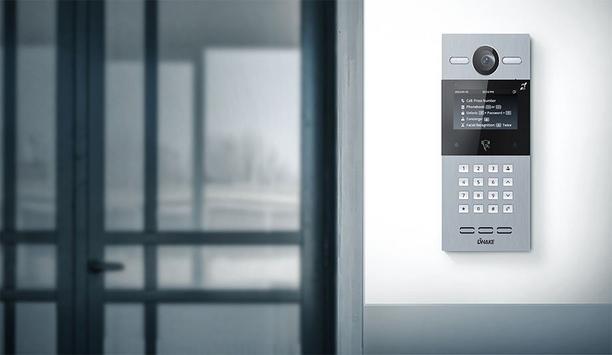
A step-by-step checklist for choosing an intercom system
Download
The wireless access control report 2023
DownloadCybersecurity in keyless access management
Download
Wireless Access Control eBook
Download
Wireless security: Cut costs without cutting corners
Download
Making your surveillance cyber secure
Download
How to keep students safe on campus
Download
Network Security Redefined: IP-Enabled Access Control
Download
Mobile Access - What you need to know
Download
The evolution of cards and credentials in physical access
Download

Videos
Wireless security: Manufacturers & Suppliers
- ASSA ABLOY - Aperio® Wireless security
- Dahua Technology Wireless security
- CLIQ - ASSA ABLOY Wireless security
- Honeywell Security Wireless security
- DSC Wireless security
- Climax Technology Wireless security
- Ajax Wireless security
- Senstar Wireless security
- Vanderbilt Wireless security
- Visonic Wireless security
- ASSA ABLOY Wireless security
- OPTEX Wireless security
- Pyronix Wireless security
- Verkada Wireless security
- Bosch Wireless security
- RISCO Group Wireless security
- Kantech Wireless security
- Paxton Access Wireless security
- D-Link Wireless security

Using artificial intelligence (AI) to automate physical security systems
Download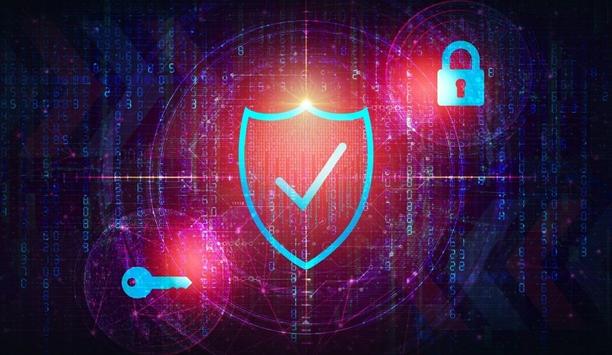
A modern guide to data loss prevention
Download
7 proven solutions for law enforcement key control and asset management
Download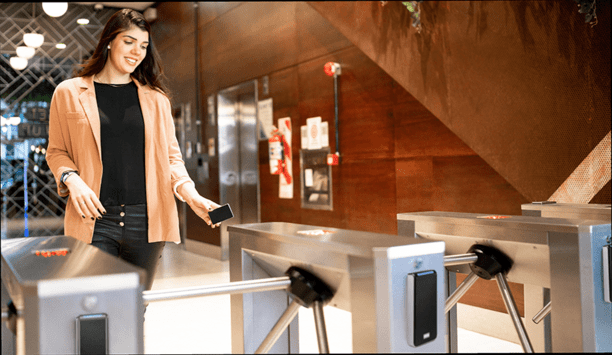
The truth behind 9 mobile access myths
Download
Access control system planning phase 2
Download

